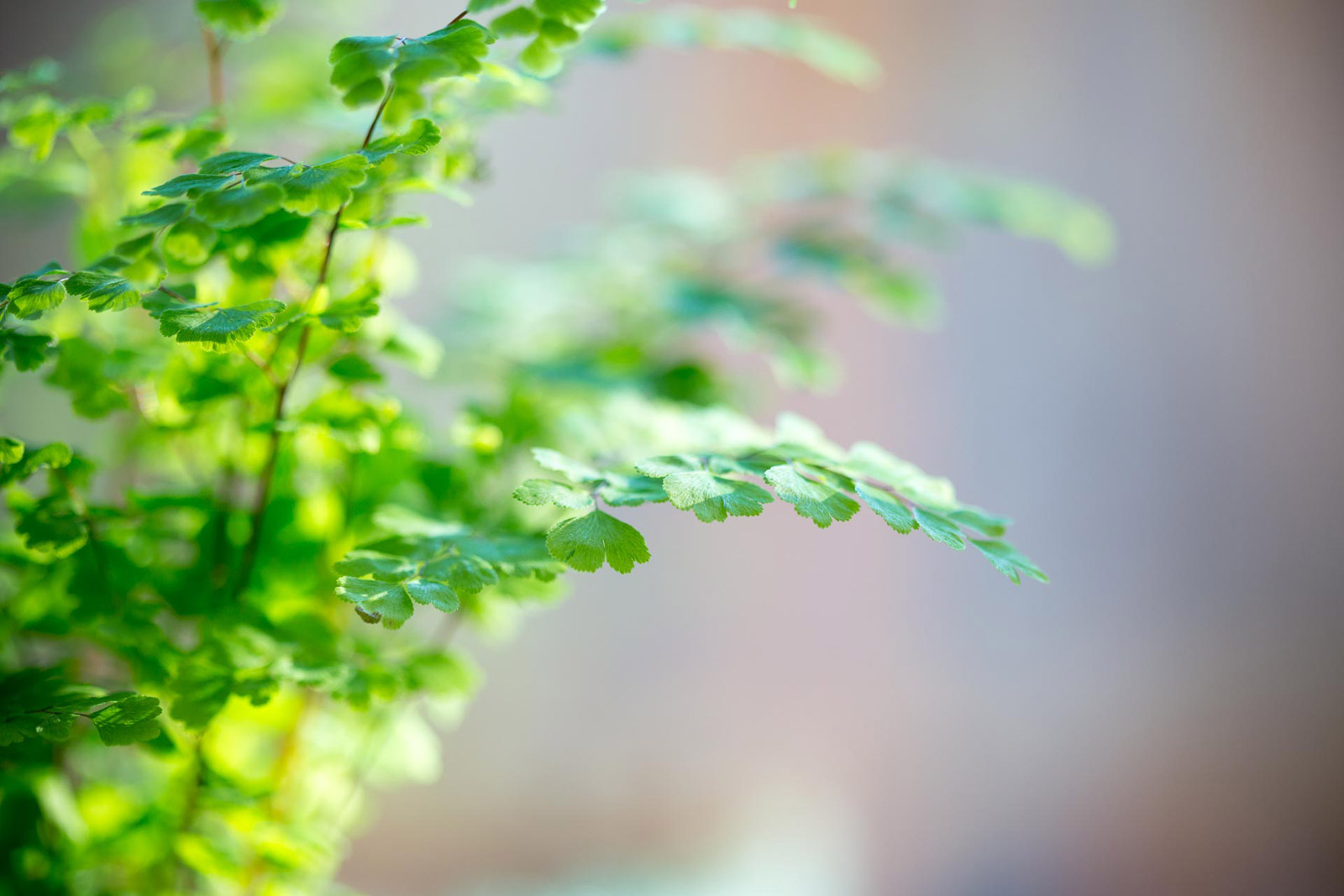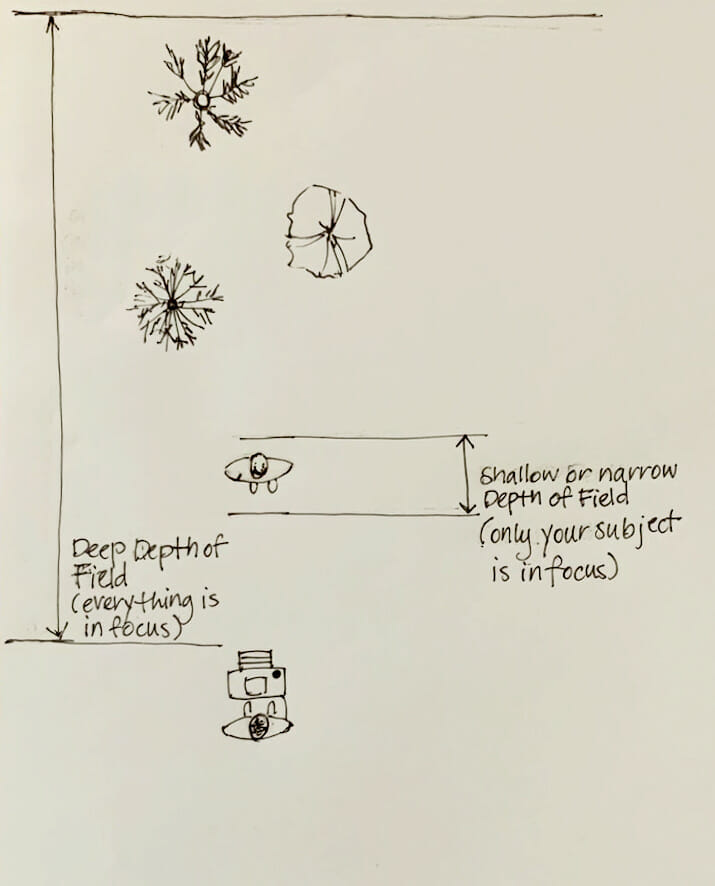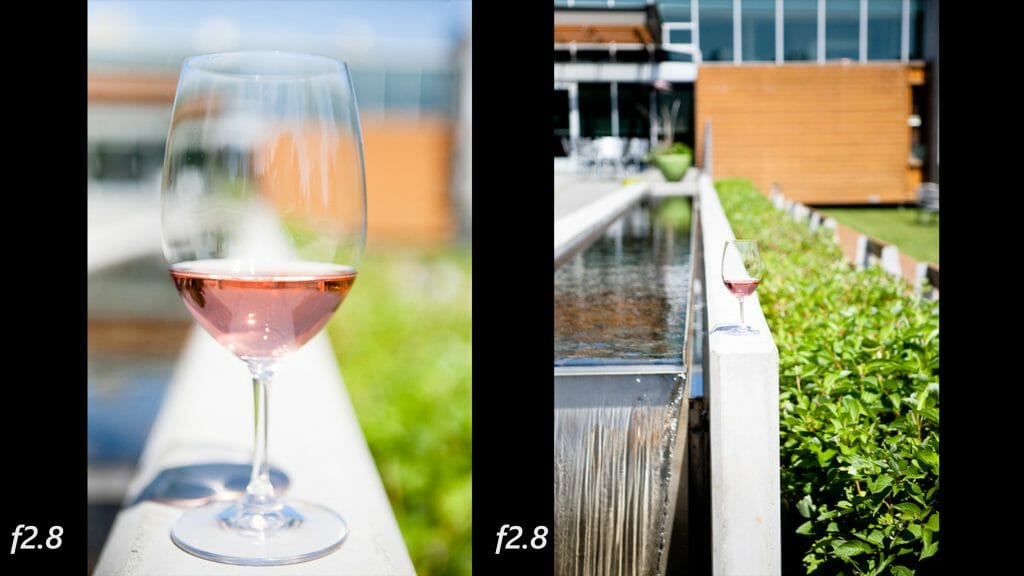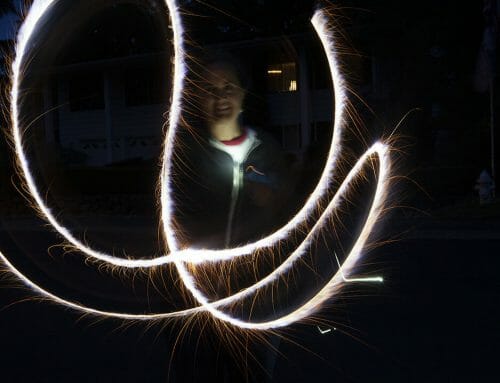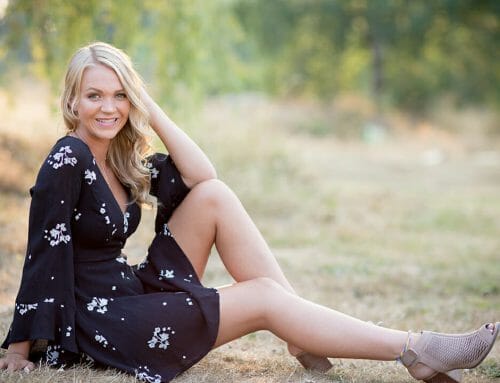Have you wondered how photographers get that blurry background in photos? As a portrait photographer, I love having a blurry background that isolates my subject and makes them stand out. Not only does it bring the focus on the person, it also lessens any distractions in the background. I’m going to teach you how to do that.
Depth of Field
A blurry background in photography terms is called “shallow depth of field”.
A shallow depth of field (also sometimes called a “narrow” depth of field) is controlled by the size of the aperture opening. A large aperture (small number, ex. f2.8) is controlled by the lens. It will create a plane of focus in front of your camera. Think of it like an invisible piece of glass a couple of feet or so in front of and parallel to your lens that extends in every direction. Whatever is within that piece of glass will be in focus. As you change the size of your aperture to a smaller aperture (bigger number, ex. f8) that piece of invisible glass gets thicker and thinker until everything in view is in focus with your smallest aperture (ex. f22).
Depth of Field Sketch
(Putting my Architecture schooling to use! :)
If you put your camera in the Aperture Priority Mode (A or Av) and change the dial on the top or back of your camera, you should see a number changing. It might have a ‘f’ in front of it or it just might be a plain number or number with a decimal. This is your “f-stop” which is the size of your aperture opening. As I said, the smaller the number the bigger the opening, the shallower the depth of field. However, the distance to your subject also effects the depth of field.
These two photos were taken with the same aperture. The only thing that changed is my distance from the subject which, in turn, changed the depth of field.
If you want a very shallow depth of field, you need a large aperture (small number) and to be close to your subject. Which brings me to the next tip, those numbers on the top of your lens (ex. 18, 24, 35 and 55) mimic you stepping further back or closer to your subject. If you look through your camera at 18, it appears that you are further away from your subject. If you move the lens to 55 your subject will appear closer to you than it is. Which means that those numbers on your lens also effect your depth of field because if you have your lens on 18, it’s the same as stepping away from your subject. If you have your lens on 55, it mimics you stepping forward.
Three Things that Affect your Depth of Field
- A large aperture opening (small number)
- Focusing close to you
- A higher focal length (ex. 55 or more)
If you have a telephoto lens, this will allow you to get that shallow depth of field without being as close to your subject. If you bought a kit with a couple of lenses, usually you’ll have the standard 18-55mm lens and then a 55-200mm or 55-300mm. This will allow you a nice shallow depth of field without being as close to your subject which is very nice for portraits. For some reason people don’t like you to be right up close to them when taking their photos! ? I love using my telephoto lens for portraits! I get that nice blurry background at a safe distance which helps people relax a bit in front of the camera.
Whatever your subject is, try experimenting with shooting on your Aperture Priority Mode using various sizes of aperture, various distances and various focal lengths on your lens to help you understand the differences each makes.
Check out our Photography Basics post for more information on Aperture.
